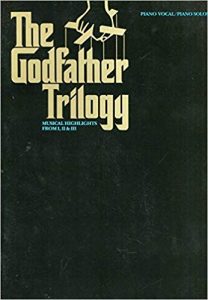Browse in the Library:
Or browse in the categories menus & download the Library Catalog PDF:
The Godfather: Here are some facts about the award-winning movies centered around the fictional Corleone crime family.
It’s one of the most popular and critically acclaimed movie series in Hollywood history. But when The Godfather was in production, it was anything but a surefire hit. From casting squabbles to the producers’ real-life battle with organized crime bosses, here’s the story you may not know about The Godfather films.
Both Mario Puzo and Francis Ford Coppola came to the project due to money woes.
Mario Puzo was a New York-born writer who had published several earlier books to little acclaim, even fewer sales, and had even worked under a pen name as a writer for pulp magazines. By the mid-1960s, he had a large family — and growing gambling debts.
Eager to find a subject that he thought would appeal to the masses, he turned his attention to organized crime, which had become a hot-button topic thanks to a series of televised hearings in the U.S. Congress in the 1950s and ’60s. In 1968, he sold the rights for his yet-to-be-published book to Paramount Pictures, who were shocked when it became a runaway bestseller in 1969.

That same year, filmmaker Francis Ford Coppola had co-founded his own independent movie studio, American Zoetrope, with friend and fellow director George Lucas. The new company was struggling, and although Coppola initially turned down Paramount when they approached him to direct the film (he couldn’t even finish the book the first time he tried to read it), Lucas and others convinced him to take the job to secure much-needed funds for Zoetrope.
Download the best film score from the Sheet Music Library.
The first film almost looked very different
One of Coppola’s first battles with Paramount was over the film’s setting and budget. Eager to save money, the studio had pushed Puzo to write a draft that updated the action to the 1970s. When Coppola came onboard, he insisted that it remain true to the 1940s world Puzo had originally envisioned. He also refused their suggestion that they save money by shooting outside of New York City (Kansas City was one suggestion), but Coppola once again held firm.
Coppola later said that he was nearly fired several times during the shoot, and was convinced that he was saved by winning an Oscar during filming (a Best Original Screenplay Award for Patton).
Exasperated with several crew members who he believed were unsupportive of his vision for the film, Coppola fired them, including an editor who was angling for Coppola’s job. One person that Coppola protected? Cinematographer Gordon Willis, whose iconic use of shadows and darkness infuriated Paramount bosses but gave the film its iconic look and feel.
The studio balked at Coppola’s casting choice for Vito Corleone
Although Marlon Brando is considered one of the most respected actors of the 20th century, by the early 1970s he’d earned a reputation for being difficult and unprofessional. So, it was perhaps no surprise that nobody at Paramount wanted to cast him as Vito Corleone. The studio wanted Coppola to consider actors Danny Thomas, Burt Lancaster, Ernest Borgnine, Anthony Quinn or others, but Coppola insisted that Brando was his only choice.
The studio made several stipulations that they believed Brando would refuse, including a low salary, putting up a bond to cover any financial costs due to delays and submitting to a screen test. Coppola tricked the mercurial actor by telling him he wanted to privately film him to work out some ideas for the film. Brando’s stunning on-camera physical transformation into Corleone (including shoving tissues in his lower cheeks) finally convinced Paramount to cast him.
Paramount was also unenthusiastic about casting Al Pacino as Michael Corleone
At the time of casting, Al Pacino was a young actor with New York stage experience but just one film credit. Early in the process, the studio had offered the role of Michael Corleone to Warren Beatty, Robert Redford and Jack Nicholson, who all passed. Others who auditioned for the role included Martin Sheen and Robert De Niro. De Niro also auditioned for the role of Sonny Corleone but was later cast as a young Vito in The Godfather II.
James Caan, who would eventually play hotheaded older son Sonny, was initially cast as Michael, with another actor cast as Sonny. Producers eventually convinced Coppola to fire the other actor and give Caan the role, with Pacino as youngest son Michael.
Thanks to the real-life mob, the word ‘mafia’ never appears in the first film
In 1970, a group (led in part by crime family boss Joe Colombo Sr.) formed the Italian American Civil Rights League, aimed at eliminating offensive stereotypes and depictions in business and media. The group quickly set their sights on The Godfather, protesting the film from the moment it was announced. But Colombo allegedly took things even further.
The shoot was threatened with costly labor shutdowns aimed at derailing production, engineered by the organized crime groups that controlled the unions. Producer Albert Ruddy’s car windows were blown out, and Paramount chief exec Robert Evans claimed to have received phone calls threatening him and his family, including then-wife Ali MacGraw.
In February 1971, just before filming began, Ruddy sat down with Anthony Colombo, one of Joe Sr’s sons, and hashed out a compromise. The League agreed to give its approval if the producers allowed the League to review the script (and remove the words “mafia” or “La Cosa Nostra”) and donate the proceeds of the New York premiere to the League. Ruddy’s public deal infuriated Paramount, who threatened to fire him, but it ended the boycotts and threats.
The Godfather Soundtrack
Browse in the Library:
Or browse in the categories menus & download the Library Catalog PDF:
